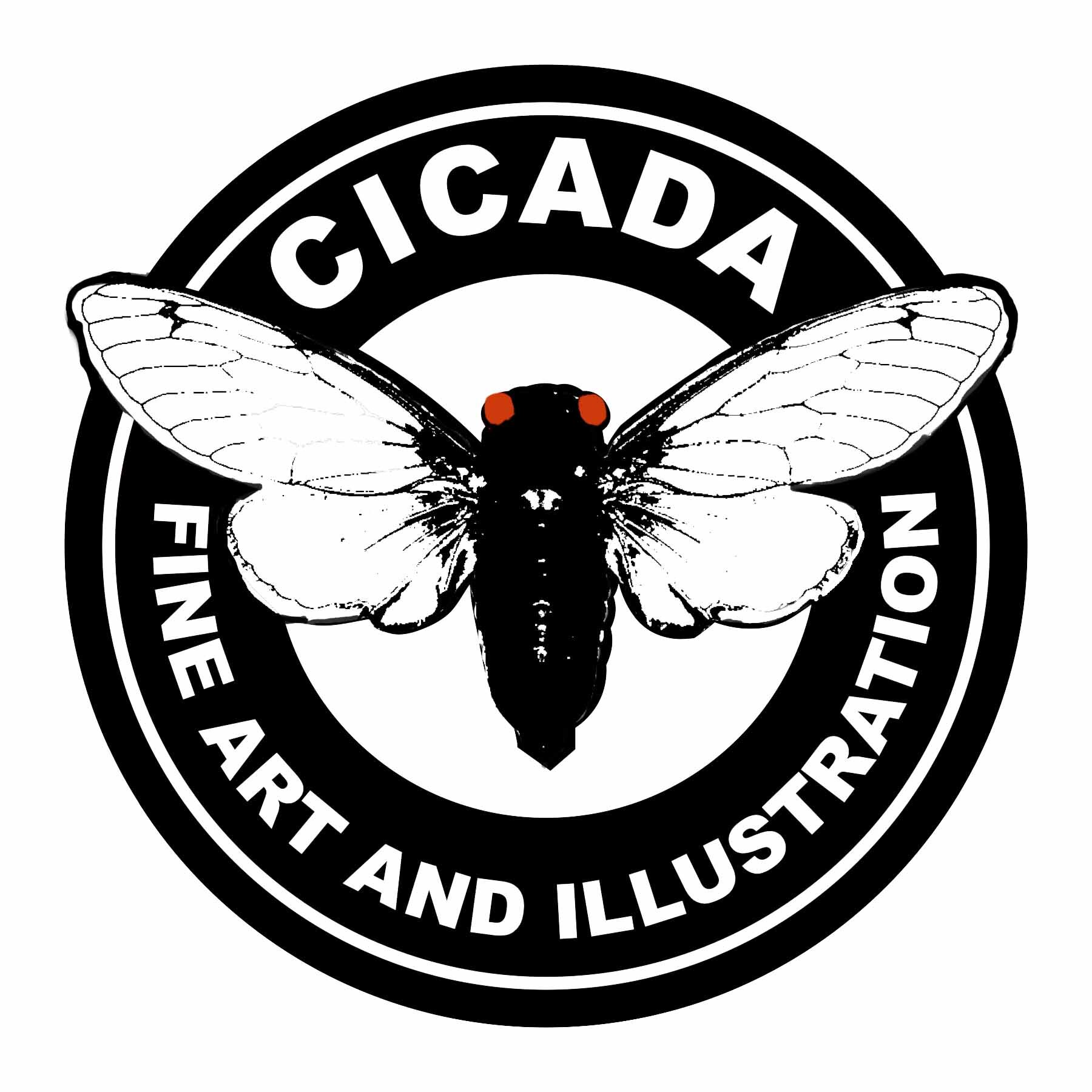Interview with artist Ricky Sikes
Ricky Sikes grew up in Louisiana exploring the unique landscapes that he now paints with an eerie quality that makes them incredibly interesting and beautiful. His love of illustration comes through in his portraits and fantasy works of self-exploration. Ricky earned a BFA from the Rocky Mountain College of Art and Design and an MFA from Louisiana Tech University. He teaches art at the University of Arkansas at Little Rock, where he is also Artist-in-Residence. Ricky’s work can be found at Boswell-Mourot Fine Art in Little Rock and at his website rickysikes.com.
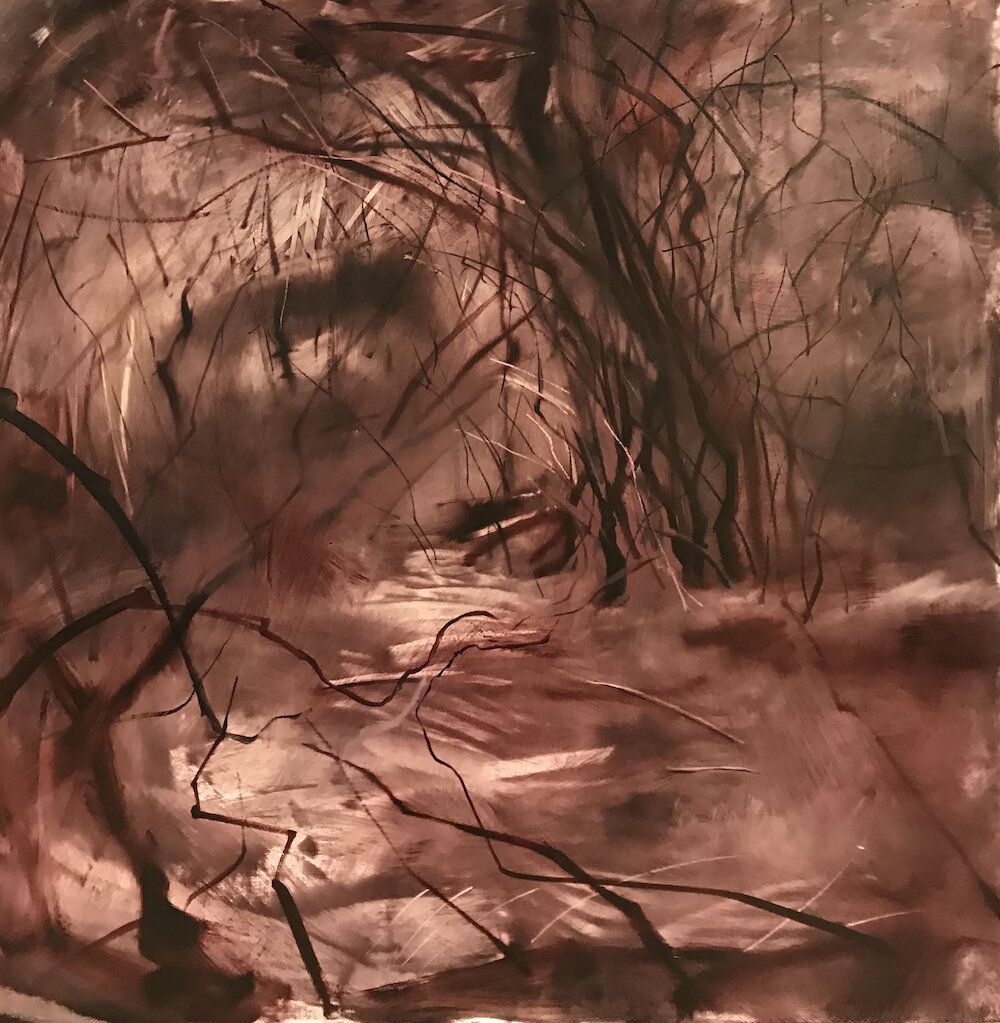
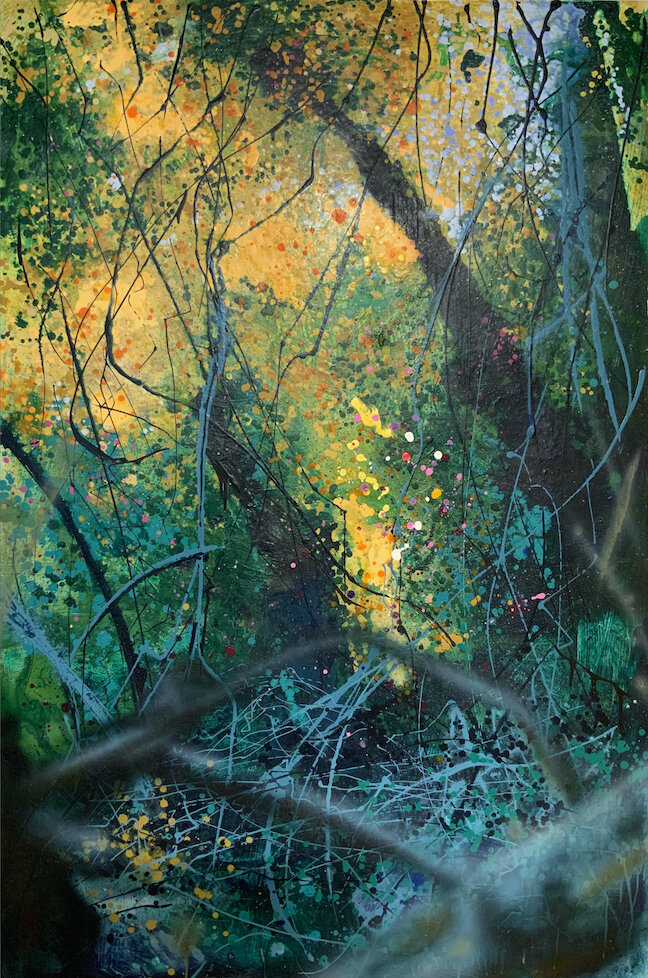
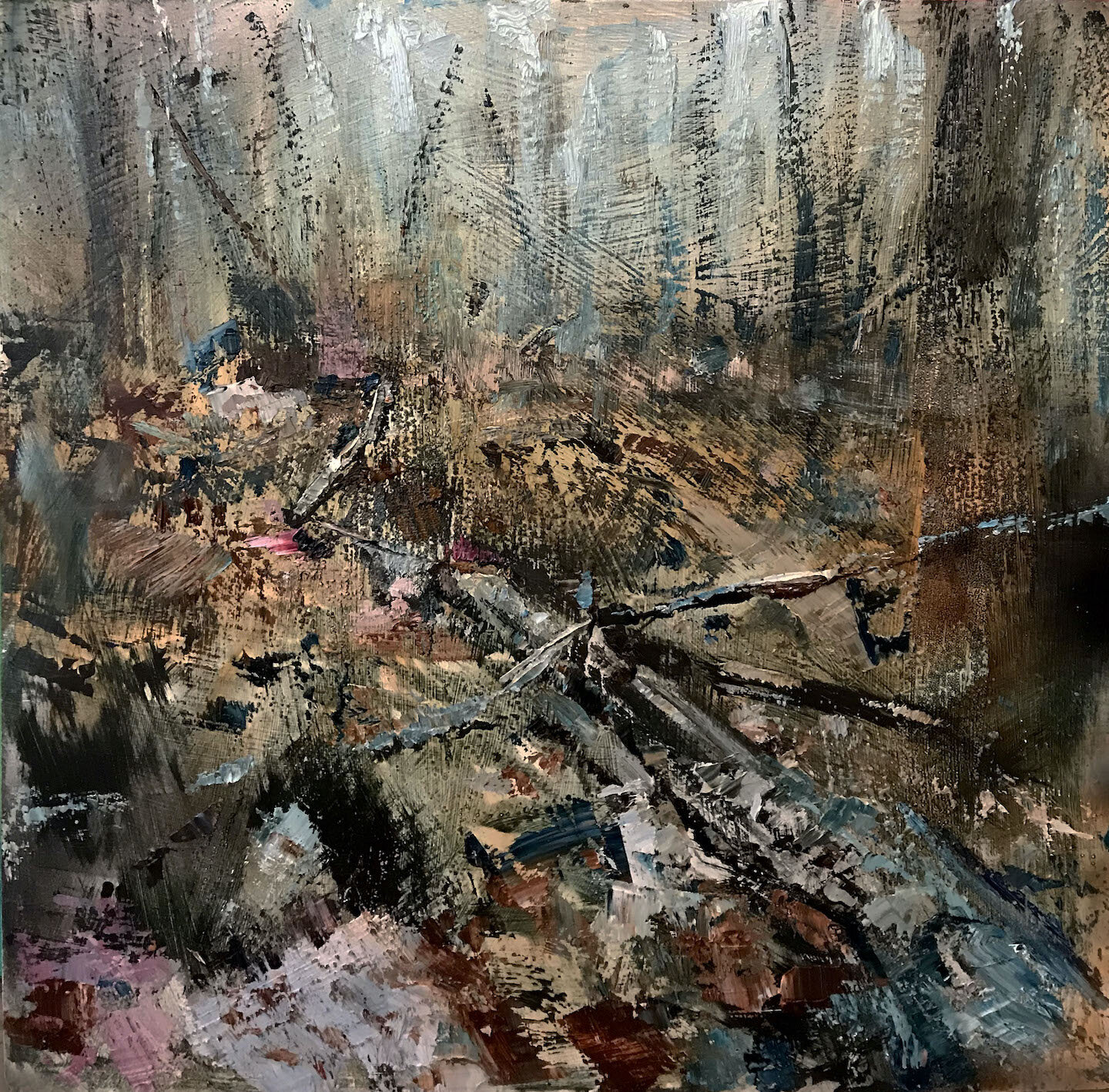
AAS: You have lived, worked and studied in a number of places around the country. Where are you from originally and what brought you to Arkansas?
RS: Yes, I’ve lived in a lot of different places in my life. I was “kind of” a military brat. I also spent a few years in the Air Force which also contributed to me moving around a lot. Originally, I’m from Monroe, Louisiana. Born there and then moved to Southern Louisiana around junior high. I started and finished high school in central Texas, Austin area. Once high school was over, I bummed around for a while and suddenly had the opportunity to live in Wurzburg, Germany. I lived there for two years – amazing place. When that was over, I moved back home to Louisiana. What a contrast, Louisiana and Germany! Man, I was feeling a little lost. At that point, the military seemed a good option. From 2001 to 2005 I lived and worked in Japan as an F-16 mechanic. Loved Japan! Finished out my enlistment in Mississippi and got out of the Air Force in 2006. Went to earn my BFA at the Rock Mountain College of Art and Design in Denver, Colorado right after that. Once I finished school there, I went back home to Louisiana, bummed around for a few more years. Decided to earn my MFA at Louisiana Tech University in Ruston, Louisiana. Finished my MFA in 2018 and suddenly had the rare opportunity at being Artist-in-Residence at University of Arkansas at Little Rock and here I am.
AAS: You’ve taught art at the grade school and college level. Is teaching something you have always thought you would do?
RS: Teaching isn’t something I originally thought I’d like. I realized I loved it after teaching grade school and after hosting private painting workshops in Louisiana. It really fired me up. That’s actually what made me want to go to graduate school – so I could teach professionally. My education has a bit of a backstory. I actually went to earn my BFA to become a fantasy illustrator. I loved game concept art, comics and any kind of cool illustration. After earning my BFA I was obligated to move back to Louisiana. Not a lot of fantasy illustration work there, however. I was able to make a living as a portrait painter. This became something I continued to do to this day. That’s also when I was introduced to the fine art world. I mean, I had always been interested in the fine art side of things, but stumbling into painting portraits was what really made me want to do gallery painting. Now I do all kinds of stuff.
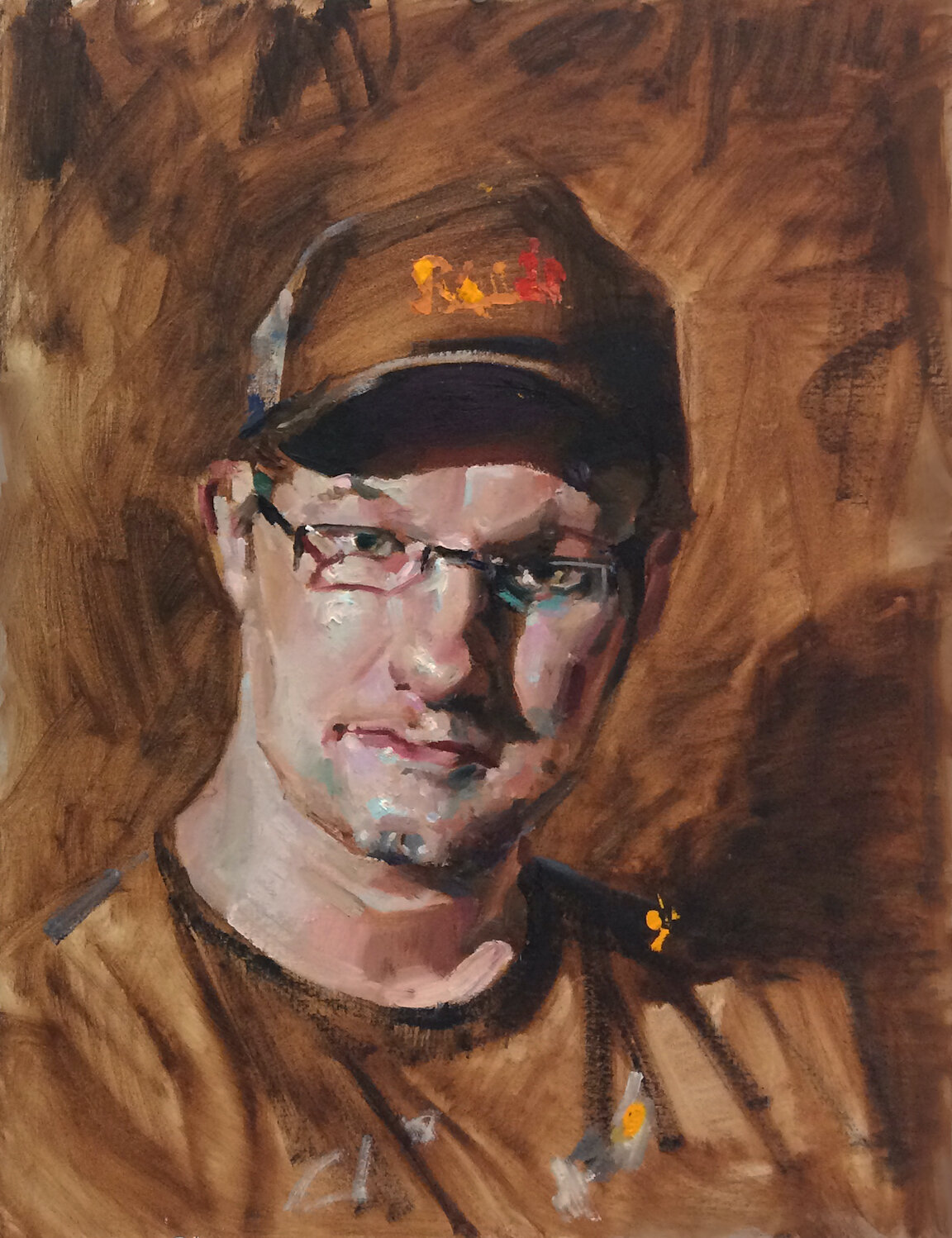
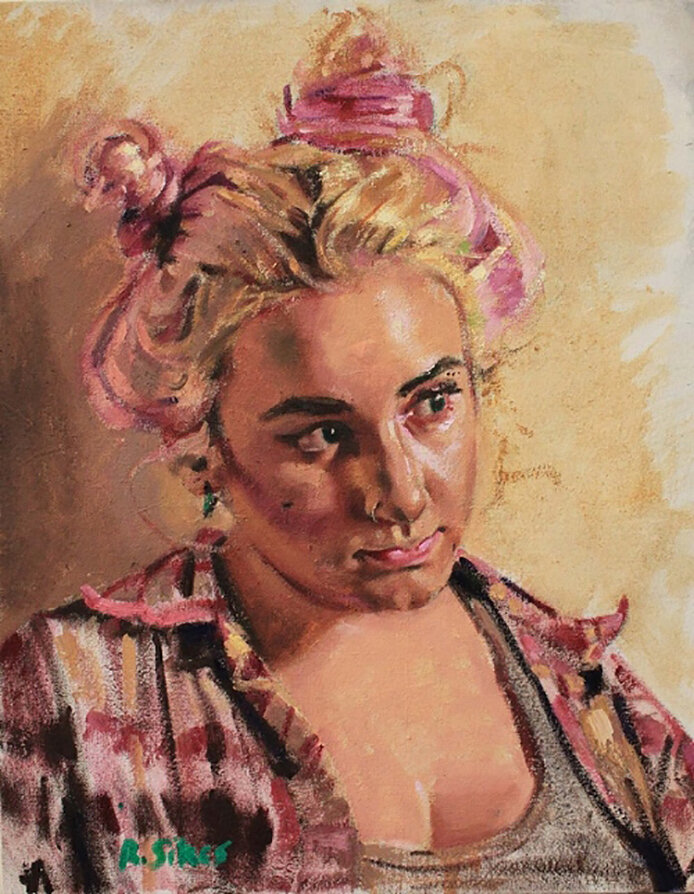
AAS: You describe yourself as a mixed media artist. You are an illustrator, a portraitist, and a figurative painter and currently as you said, the Artist-in-Residence at the UALR. Does that position free some time to devote to painting?
RS: The position actually does not specifically free up time to devote to painting. Nor would I expect it to. I make time for it though. I’ve always been an artist and painter. Apparently, it’s in my blood. I guess. In other words, I’d be painting all this stuff whether I had time for it or not. If I didn’t, I would just end up withering on the vine.
Yes, I definitely do a lot of different genres of art. Drove my instructors crazy in school. Honestly, I don’t really “try” to do that. I just see stuff I like and think “I, too, would like to do that but in my own way”. It keeps me excited to make work and ensures I don’t get stagnant. That is a simplified explanation. Really, I have a lot on the inside to communicate visually. I see it all as an opportunity to show my inner vision in pictorial form.
AAS: What is CICADA Fine Art and Illustration?
RS: CICADA Fine art and Illustration is my recent attempt at branding. The whole branding thing fascinates me. It’s a lot of fun too. The idea of having a logo and packaging my sold plein-air landscapes in a way which enhances the brand really fires me up. It really is a way to give reason to the choices I make when it comes to cohesiveness, what I want to communicate, and my target audience. All that stuff.
AAS: Having grown up in South Louisiana I am very familiar with cicadas and their crazy antics. Why did you choose the cicada for your logo?
RS: I chose the image of the cicada for a few reasons. One is because of my fascination with the insect itself. The specific cicada is actually a red-eyed cicada. They look so cool! Black with glowing red eyes. They just seem so alien to me. Unlike the green ones, they only come out after waiting patiently underground for 17 years. This makes them one of the world’s longest living insects. When it happens, it’s like a massive alien invasion. I’ve seen them arise a few times in my life and each time it’s like this ritual or festival for the land. There are millions of them. All the fish, birds, mammals and other insects have a banquet and everything comes alive. It affects the whole ecosystem. It’s a little silly but I kind of hope my work functioning a bit like this. Another reason that I chose the cicada is that the red-eyed cicada is a common and recognizable insect in the regions of the south where I create and show my work. They are not exclusive to these areas but most everyone is familiar with them. I see them as kind of a symbol of nature and cyclical progression.
AAS: Where is your favorite place to paint?
"When I set out to paint a scene I try to capture the essence of the location or how it ‘feels’ to be there.”
RS: My favorite place to paint is outside. I love to take in the area I’m painting while I’m painting it. I love to paint in the woods behind the area where I grew up. I recently discovered the name of the area is Chauvin Swamp. It’s not all swamp though. Its swamp surrounded by dense canopy. It’s my favorite because these woods have characteristics I don’t see anywhere else. I don’t really know how to explain it with words. I think of it like Monet’s Giverny.
Besides that as a child my friends and I would spend hours playing back there. We were like a bunch of feral children.
Internal Landscape #10, 75” x 51”, oil on canvas
AAS: I especially love Internal Landscape #20 from your Internal Landscape series. You created depth by blurring the foreground – very effective. The scene is somehow recognizable to anyone who has explored Arkansas’ trails or lived in the South.
RS: I’m glad Internal Landscape #20 works as well as it does. I really wanted to mimic the sensation of being in the woods with this series. These locations have their own, kind of, spirit to them. In order to create a piece which contains the essence of these particular scenes, with the previous mentioned goals on mind, I had to decide the characteristics of being present in this location I wanted to suggest.
The first was the space itself. These forests often have very little visibility and are incredibly dense. Perceivable distance usually stops at around 10 or 20 feet. Sometimes less than that. To suggest a three-dimensional space this shallow on a two-dimensional surface is quite a challenge. So, simplification and distinction of distance becomes important. Most landscape artists know the rule of “foreground, middle ground and background”. The challenge here is to cram all three of these zones in a shallow space. Well, in the woods I noticed things in the foreground aren’t simply in the foreground like in normal landscapes. They are IN THE FOREGROUND! Like, 2 inches from your eyeball and completely out of focus. It is tough but using blurry, depth of field focus like this helps to create the illusion of space.
The second is the simplification of shapes. Everything in this scene is incredibly complex. There is stuff everywhere. However, there are bundles of leaves high on the trees. I decided to simplify these clusters as small circles in the form of paint drops. On the forest floor, it’s a bit different. Instead of circular shapes it’s more of a salad of sticks and shapes similar to razor blades. This kind of simplification really helps me to succeed in painting extremely complex scenes like this.
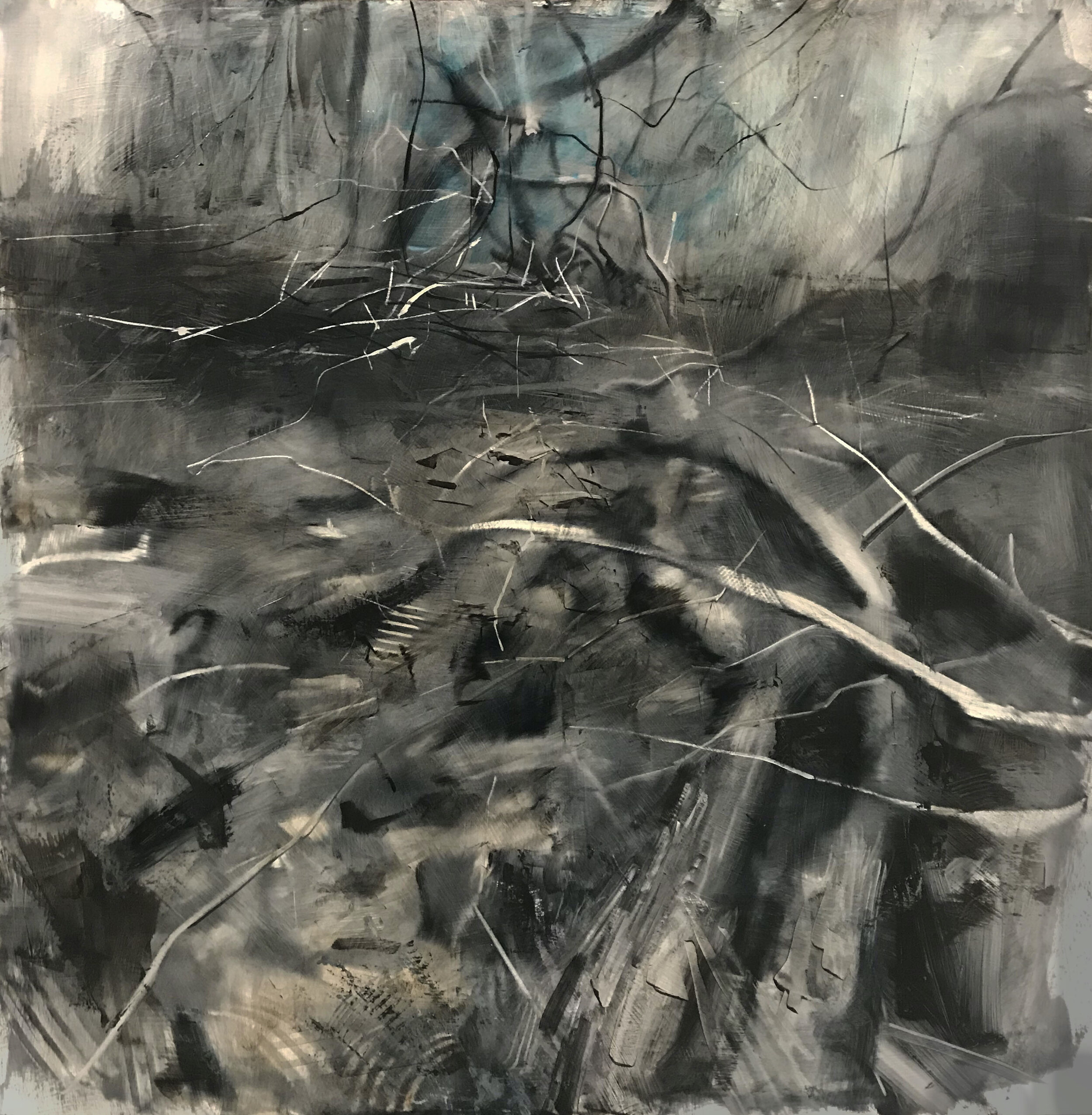
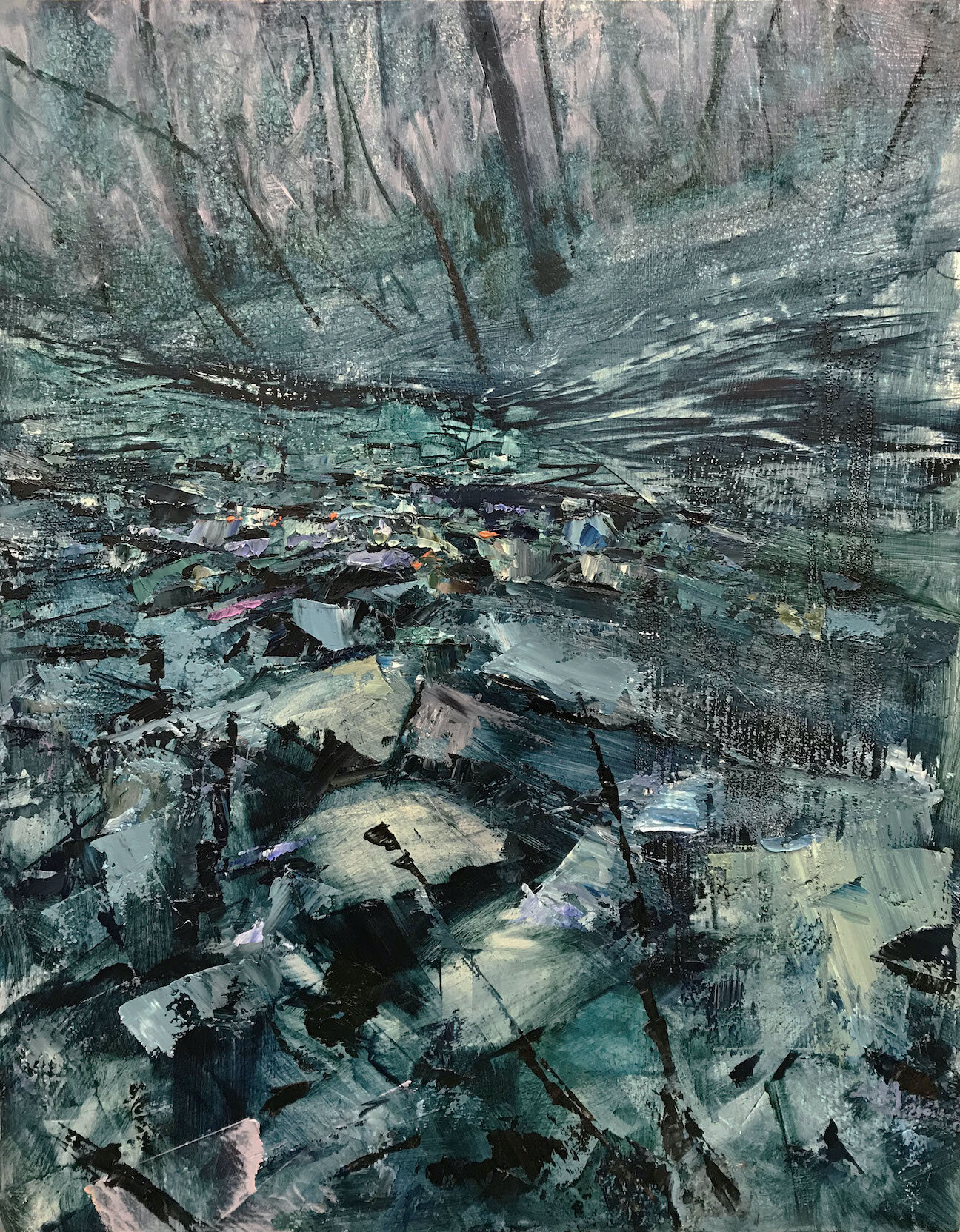
AAS: I think Johnny and Gregory are amazing portraits. Would you talk about those pieces?
Johnny, 24” x 18”, oil on canvas
RS: As for the kind of painting I do at any given moment depends entirely on what “phase” I happen to be in. At the time I painted Johnny I was going through a really passionate portrait phase. Not just portraits though. Portraits that accentuated the character of the individual. Not quite caricature but bordering on it. Johnny was a friend of mine in Louisiana before I went to graduate school. I’d often ask friends to pose for me. Johnny happened to have a personality I was able to capture visually. Good lighting and a good pose didn’t hurt either.
Gregory was a really good friend of mine. This painting was pretty much the same story. Only this time I got really excited about including more of the body and exaggerating the distance and size of the hand. Worked out great!! This kind of exaggeration is something I try to achieve in all of my work. I love to exaggerate in my work. For me it really ensures I get the aesthetic or point across.


Residual Self Image, 40” x 36”, mixed media on panel
AAS: You have a series called Internal Dialogue, which I think are quite complex images - and I don’t want to put you on the spot about saying if they are dialogues you have with yourself on a regular basis, but would you talk about those pieces and what you hope they evoke from the viewer.
RS: Usually, as a professional, it’s expected that an artist will choose a body of work and simply stick to that. This body of work is ever evolving, and I am OK with that. I actually prefer it this way. It started as a self-examination. At a point in my life I had what I call a low self-esteem. Lucky for me I’ve always been seriously introspective. With that comes the ability to decide to improve yourself in some way. I don’t know how but I was able to see that I could improve. So, in my quest to improve I discovered one aspect of “self” is a continuous internal dialogue. Internal dialogue is really potent. Essentially, you subconsciously accept and believe everything it says. It really blew my mind when I discovered I had some control over my thoughts. Once I found out about internal dialogue, I continued my research and learned there were even more complex layers to a person. From there, the series evolved into work which examines us human beings as multi-layered individuals. There isn’t only our physical existence. The physical aspect matters and is included, but there is also our consciousness, our subconscious, our hormones, our soul, our mental state, our mood and the multitude of things which go through our minds from second to second. I wanted to explore all those layers and all that confusion visually. This was really rich territory for me because I think about these things a lot.
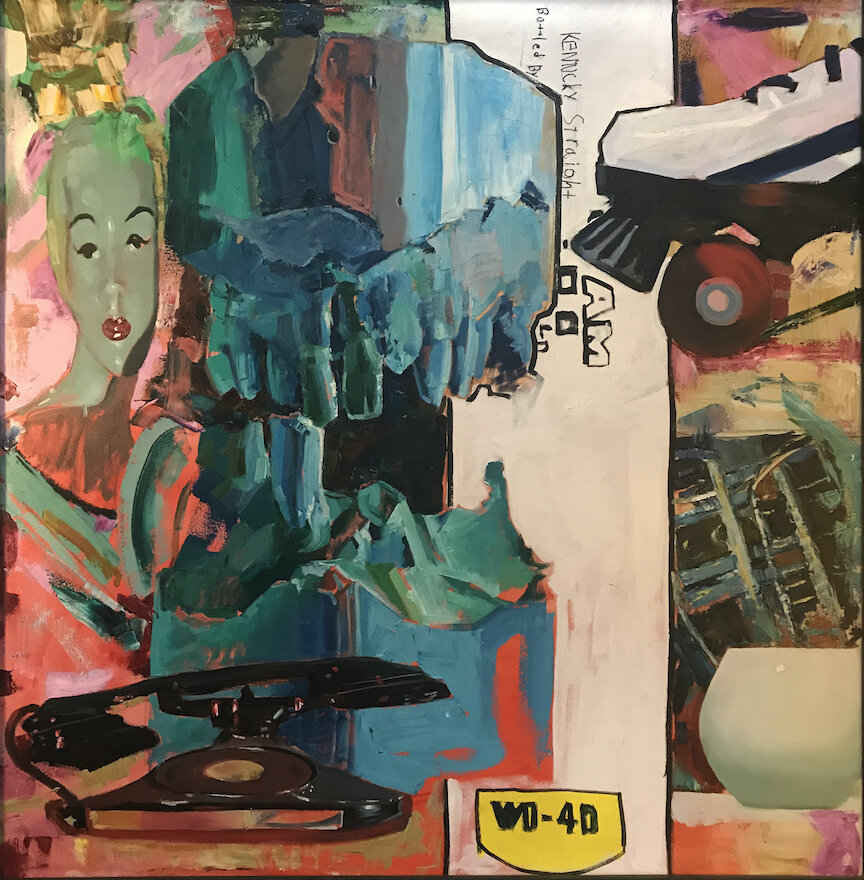


AAS: UALR must be a wonderful environment to teach and create in. What do you find art students are most worried about these days?
RS: Yes UA Little Rock has been a wonderful place to teach and work. The new facilities are top notch. I tell everyone who asks about it “I’m going to be completely spoiled by the time I leave this place”. It’s totally ruined art buildings for me LOL. What a great faculty too. It’s a privilege to work with these folks.
I find students here to be absolute sponges. They are really eager to absorb any information you’ll teach them. The thing they worry about the most in my classes is getting what’s in their head on the canvas. How to make it look right aesthetically and what is the best technical way to achieve it. It can be difficult to get what’s in your head down on canvas.
AAS: You have had many recent exhibitions and your solo exhibition at the Windgate Gallery of Art and Design just closed. That is a wonderful space. How is it having a show in times of Covid?
RS: Man, that was a good-looking show. It’s really a surprise when you finally get to see all your hard work suddenly hanging together like that. I was lucky to have a physical show hanging in an actual gallery during the quarantine. I definitely prefer it that way. Covid had definitely put a damper on some things, but I don’t let it get me down. Exhibitions are certainly important for an artist. People need to see your physical work. Exhibitions do help sell your work. Not always, but it helps. Any form of publicity helps with sales. Exhibitions are also helpful because they keep you working and putting together bodies of work as opposed to onesies and twosies.
“I love to exaggerate in my work. For me it really ensures I get the aesthetic or point across.”
AAS: What artists do you admire and take inspiration from?
RS: Good lord what a question! Where do I start? I take inspiration from a lot of different kinds of artists. I really like the work that comes from illustrators, though. That’s actually what got me interested in making art. When I was a kid, 5 or 6, I would look through my father’s album collection. Back then they would put a lot of elaborate art and illustration on the sleeves. I’d sit there for hours and look through them over and over. They were so weird yet interesting. The ones I really liked were the fantasy genre illustrations. That’s where I discovered Frank Frazetta. He was my main influence in the beginning. Simon Bisley was influenced by Frazetta’s work. He’s also one of my favorites.
For portrait and figurative work, I really like Nicolai Fechin and John Singer Sargent. Fechin’s paintings border on abstract and he’s so free with mark making and color. His color choices are amazing too. Sargent’s work is so elegant and moody. I love the lighting choices in his work.
My main landscape influence right now is Kathleen Eatherowl. Her paintings have a really neat way of making you feel like you are in a dream.
This list is really condensed. I have way too many artistic influences to name.

